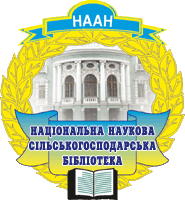 |
Electronic scientific professional edition |
| All numbers / 2018 No.1 / Article No.19 | ||||||
| 19 | Professor M.V. Vynokurov about development of carriage economy at the former USSR railways (1917–1937) | full article | ||||
|
https://doi.org/
|
Pages: | 286-299 |  |
 |
||
| Summary | ||||||
|
Defined in this article is a period of development of the young Soviet country, already in the first years of its existence, which was characterized by dynamic development of all sectors of the national economy and the rapid increase of cargo turnover in the country. This required a significant renewal and modernization of the rolling stock of railways and strengthening on the production and technical facilities for the repair of the carriage rolling stock. M.V. Vynokurov, professor of the Dnipropetrovsk Institute of Railway Transport Engineering witnessed these processes and therefore published a number of articles devoted to analysis of the development of the carriage economy in the country, namely during the first 30 years of its existence. M.V. Vinokurov predicted that in the field of passenger carriage in the postwar period will be marked by the transition to the mass construction of all-metal cars. The main advantages were sufficient strength, tare reduction, increased service life and a significant increase of the wagon run between repairs. In domestic new all-metal cars used forced ventilation with dust cleaning and heating of air in winter. The most important task of car building in the near future was to reduce the weight of the wagon container. That is why in 1946 the All-Union Research Institute of Railway Transport has developed a model design of the covered lightweight car. Consequently, in this car there was a more rational proportional distribution of material, which made it possible to reduce the packaging by 2.75 tons. The main issue of gaining the productive capacity railway repair workshops was specialization of repairing single-carriage, introduction of mass and serial works from the extensive use of current methods of repair and mechanical hardworking processes. The experience of The Kanash Car Repair Plant due to the current system has proved ample opportunity to a significant reduction of demurrage in downtime and repair cost of production. At that time, the current repair method successfully used not only in plants but also in depot. Mikhail Vinokurov concerned that over time achieved a significant increase in strength and maintenance of rolling stock, increasing rolling stock department and its repair facilities. The employees of the carriage facilities fulfill requirements faced transport and created the prerequisites for further rapid growth of freight and passenger traffic. |
||||||
| Keywords | ||||||
| railway transport, carriage economy, railroad cars, science, technology | ||||||
| References | ||||||
|
||||||
Title page of Edition
© National Scientific Agricultural Library NAAS, 2018